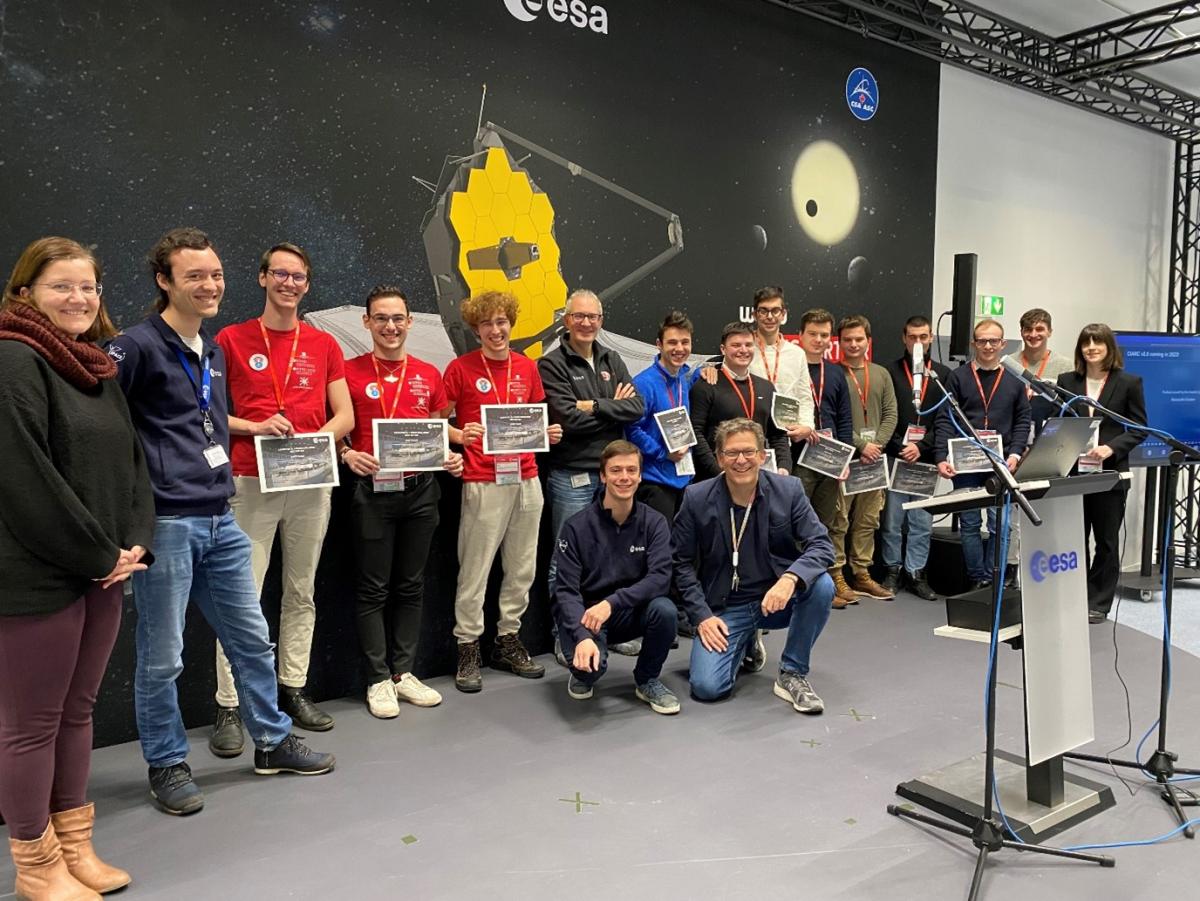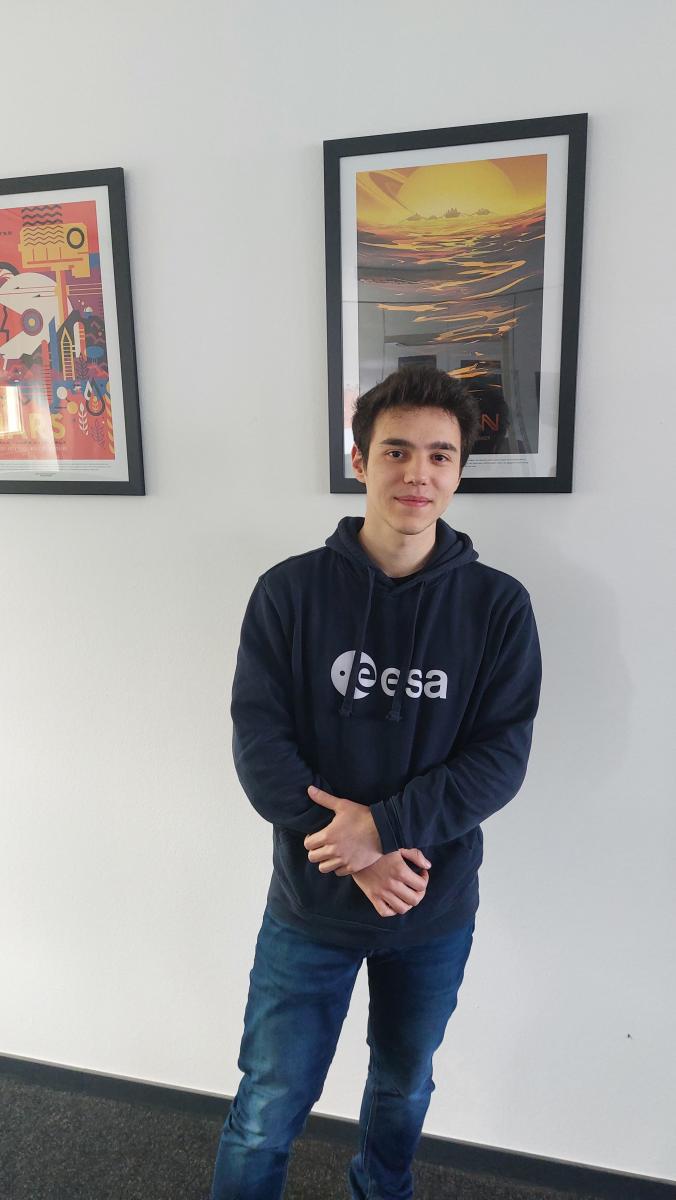Computer in a Room Challenge: What Can You Achieve with 10 Minutes of Satellite Access?
25 April 2023
Imagine getting access to a satellite for only 10 minutes at a time and with limited bandwidth, storage space, and processing power. What would you do with it?
This question was the focus of the Computer in a Room Challenge, a project started by the European Space Agency (ESA), supported by some of our colleagues.
ESA has a specific set of algorithms, procedures, and standards to communicate with satellites and deal with the various issues and challenges implied by satellite communication (high delay and latency, low reliability, intermittent availability).
The Computer In A Room Challenge (CIARC) was issued by ESA last year to find innovative solutions, gather new ideas, improve their current solutions, and in general advertise ESA to promising students to convince them to pursue a career in the space sector. The challenge was directed at teams of computer science students in universities across ESA’s member states, who participated in teams of 2-5.
During the challenge, each team had access to their own simulated satellite environment. The satellite was only accessible for ~10mn every 90mn, with limited bandwidth, storage space, processing power… The idea was to push the students (ideally not biased for the space sector, hence the focus on computer science students) to program their satellite to fulfill specific goals autonomously, using as little time and fuel as possible.
The satellite simulation was created by experts from the European Space Research and Technology Centre (ESTEC), the European Space Operations Centre (ESOC) and our IT Manager Thorsten Graber. Josselin Stark, Junior Software Engineer at Solenix, took over the CIARC project from Thorsten, after having worked with him on the METERON project, both at ESOC.
Commenting on the challenge, Josselin said: “For this project, I was de facto the technical lead and worked with an ESA Young Graduate Trainee (YGT) who focused on the managerial aspects of the challenge and on refining gameplay mechanics. My role was that of software engineer and system administrator.
We added various gameplay mechanics to make the simulation fun and interesting to interact with, essentially going from a simulation to an educational game. Technologies involved were Python for the simulation, Docker for containerization of the satellite simulations, OpenVPN for communication from the outside, and a number of virtual machines involving complex (at least for me) networking / firewall rules.
I very much appreciated the freedom that comes with working on a relatively small codebase, with only few constraints to respect. Creating the game was as fun for me as it was for the students playing it. The project was largely successful and will be renewed this year.”
Last year, 8 teams from Norway, Germany, and Italy took part. The results submitted by the students were impressive given how little time they had (2 months). Each team came up with a relatively unique approach to the problem. One team used a subsumption architecture to control their satellite, inspired by their robotics background and focusing on complete automation. Another team applied low-level, kernel functionality to small bash scripts, taking the “use as little processing power as possible“ goal to heart. Other teams went for more or less complex Python implementations, featuring interesting solutions to scheduling, file management, etc.

The three winning teams and the organisers of the challenge. Left to right: Heike Sillack (Secretary), Josselin Stark, Thomas Demeillers (YGT) and Kim Nergaard (Head of the Mission Operations Definition Unit).
The three winning teams (two Italian, one Norwegian) were invited to ESOC in mid-December 2022. There was an event with speeches from Simon Plum (Head of the Mission Operations Department), Kim Nergaard (Head of the Mission Operations Definition Unit), Florence Loustalot (Head of Recruitment and Head of the YGT Program) and more. The teams returned home with ESA goodies and the promise to be able to work in cooperation with ESOC on a small project involving OPS-SAT, an educational CubeSat currently on orbit. The two Italian teams were featured in local newspapers.
Riccardo Sale, from the Italian Ca’ Foscari university, joined the project with one of the winning teams.

Riccardo Sale in our Darmstadt Solenix office.
Speaking about CIARC, Riccardo said: “Participating in CIARC was an inspiring adventure; my team and I were challenged in a different field where we, however, had the chance to experiment and implement our own solution without having to follow any limiting guidelines.
This freedom and the structure of the project allowed us to learn as we went along, new knowledge regarding the space domain, subsequently improving on what we had previously developed.
In addition, thanks to the organised visit to ESOC, I got to talk to people working in the field and see for myself the structure and what has been accomplished to date.
Thanks to this, I therefore became more interested in the space field and the opportunities it was offering, and decided to try to get an internship at Solenix.”
Fast forward three months later and Riccardo is now enjoying his internship here at Solenix, looking forward to learn more about the space field while gathering hands-on experience.
We are excited to see what new opportunities this year’s edition of CIARC will bring and can’t wait to cooperate further with ESA on this inspiring project.